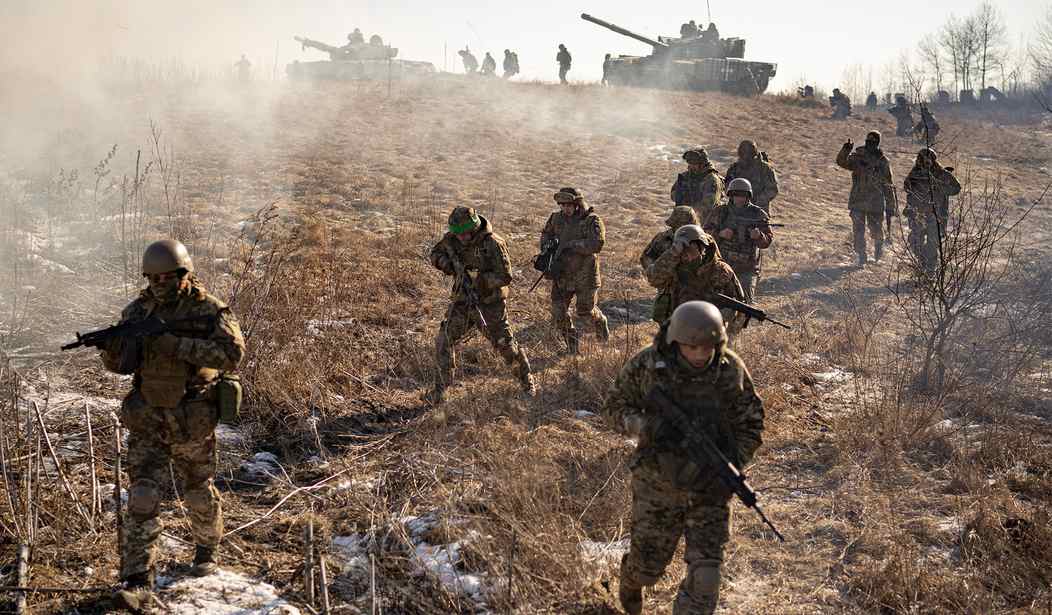It’s been known for some time now that America’s reserve of munitions has been severely depleted by the ongoing war in Ukraine. Our NATO allies in Europe aren’t doing much better. Concerns have been raised as to whether or not we would still have enough ammunition to support a sustained combat effort if we had to defend Taiwan against China or meet any other military threat. This is particularly true of our supply of 155mm howitzer shells, which the Ukrainian forces use in vast numbers every day. So why aren’t we catching up on the domestic production of these rounds? As it turns out, we currently have only two plants capable of producing these shells and they are unable to expand production very much at this point. One of the plants, located in Scranton, Pennsylvania, is already working at maximum capacity and we can’t open up other facilities overnight. (Associated Press)
The Scranton Army Ammunition Plant is at the vanguard of a multibillion-dollar Pentagon plan to modernize and accelerate its production of ammunition and equipment not only to support Ukraine, but to be ready for a potential conflict with China.
But it is one of just two sites in the U.S. that make the steel bodies for the critical 155 mm howitzer rounds that the U.S. is rushing to Ukraine to help in its grinding fight to repel the Russian invasion in the largest-scale war in Europe since World War II.
The invasion of Ukraine revealed that the U.S. stockpile of 155 mm shells and those of European allies were unprepared to support a major and ongoing conventional land war, sending them scrambling to bolster production.
Washington keeps details of exactly how many 155mm rounds we can manufacture classified (for obvious reasons), but the Ukrainians are reportedly firing between 6,000 and 8,000 rounds per day on average. We’ve already sent them more than 1.5 million rounds since the invasion began. The United States Army recently announced that it will be spending “billions” of dollars on munitions plants around the country to massively increase our production capacity. But that’s going to take at least a year before new production lines are up and running.
One problem is that it takes more than just steel to manufacture the 155mm howitzer rounds. (Though it clearly uses up a lot of steel, to be sure.)
Essentially, the 155 mm round is a very big bullet, made up of four parts: the detonating fuse, projectile, propellant and primer.
Each round is about 2 feet (60 centimeters) long, weighs about 100 pounds (45 kilograms), and is 155 mm, or 6.1 inches, in diameter. They are used in howitzer systems, which are towed large guns that are identified by the range of the angle of fire that their barrels can be set to.
Further complicating the situation is the fact that we don’t just make one kind of howitzer shell. There are multiple designs, all of which are used for different combat scenarios. Some are packed with the largest amount of explosives possible. Others are designed to fragment on impact, broadening the potential damage field. Some have onboard targeting systems, sacrificing some of the shell’s punch for improved accuracy.
What almost nobody in Washington seems to be discussing at the moment is whether or not the current situation is acceptable. As noted at the top, if we had to get into a hot war with China or even Russia tomorrow while still supplying Ukraine, we would run out of ammunition in a matter of days or at most a few weeks. And it’s not as if the Russians and the Chinese don’t know this. America is making itself increasingly vulnerable in the name of continuing this proxy war in Ukraine. And there hasn’t been a single vote taken in Congress as to whether we should be doing this at all or whether we need to impose caps on how much aid we will continue to give them.








Join the conversation as a VIP Member